FLAVOURS AVAILABLE: Cream Style, Thai Style, Tomato
FLAVOURS AVAILABLE: Cream Style, Thai Style, Tomato www.barkersprofessional.nz @barkersprofessional contactus@barkersprofessional.nz


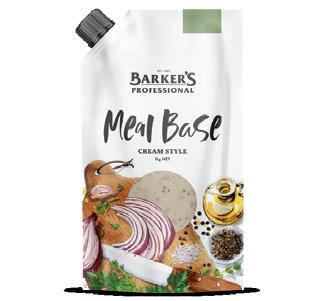
www.barkersprofessional.nz @barkersprofessional contactus@barkersprofessional.nz

May/June 2023 Vol. 5 I No. 03


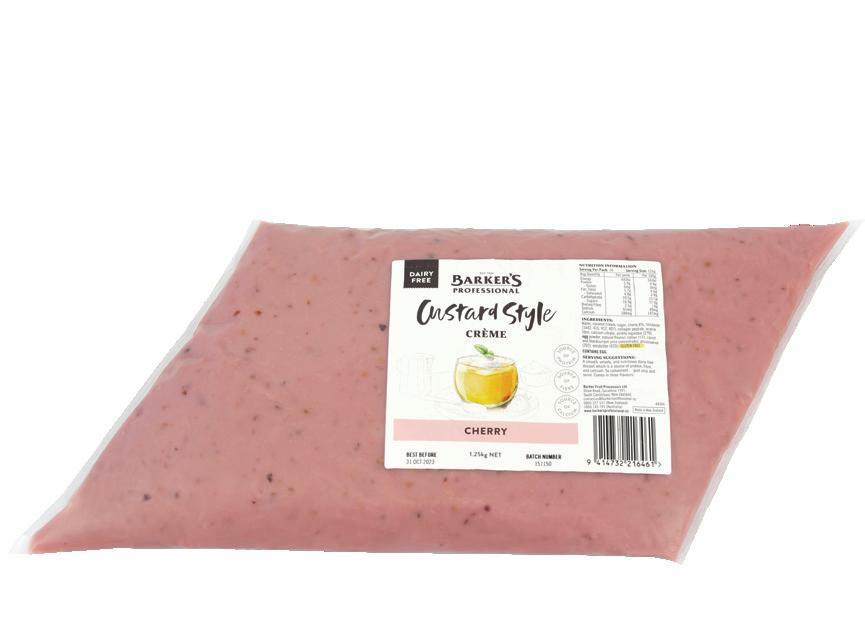


Technology Vital Tool in our Interconnected Society
n this issue of AgedPlus, we look into innovative technology and how this growing sector focuses on technology's transformative impact on seniors. As the world advances, technology companies are developing more exciting developments in this space.
Unsurprisingly, technology is vital in our fastpaced and interconnected society. The potential and possibilities are endless to enhance and empower older adults, from smart devices that promote health and well-being to safety and convenience, as well as virtual platforms that enable social connectivity.
From these cutting-edge solutions that promote proactive wellness to intuitive communication platforms that bridge generational gaps, technology is transforming the aging landscape. Technology innovations

are shaping up to be the future of aged village operations, from streamlining administrative tasks to enhancing communication channels.
This issue is the first of our "Faces of Aged Care" feature as we work to support an inclusive, connected and vibrant workforce within the aged care sector. Please get in touch with us if you would like us to feature one of your team and their story.
PUBLISHER: Tania Walters
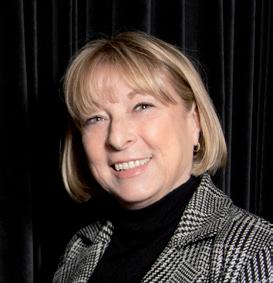
GENERAL MANAGER: Kieran Mitchell
EDITORIAL DIRECTOR: Sarah Mitchell
MANAGING EDITOR: Caitlan Mitchell
ADVERTISING
DESIGNER:
SALES: Caroline Boe SENIOR
Raymund Sarmiento
Retail 6, Heards Bldg, 2 Ruskin St, Parnell, Auckland New Zealand P: +64 3040142 Email: edit@reviewmags.com Aged Plus Village Business is published under license to Review Publishing Co Ltd. Please direct all enquiries and corres-pondence to Review Publishing Co Ltd. The opinions and material published in this edition of Aged Plus Village Business are not necessarily those of the publishers unless specifically stated. All material in this publication is copyright and may only be reproduced with the consent of the publisher. Copyright 2023 ISSN 2815-7478 (Print) / ISSN 2815-7486 (Online) THE BUSINESS OF RETIREMENT VILLAGES & AGED CARE EDITOR’SNOTE TANIA WALTERS Publisher PS Keep us up to date on your news and if you’d like your village featured, do get in touch. 3 May/June 2023
JUNIOR DESIGNER: Raymund Santos
6 News

10 Diverse Range of Citrus Right through to Christmas
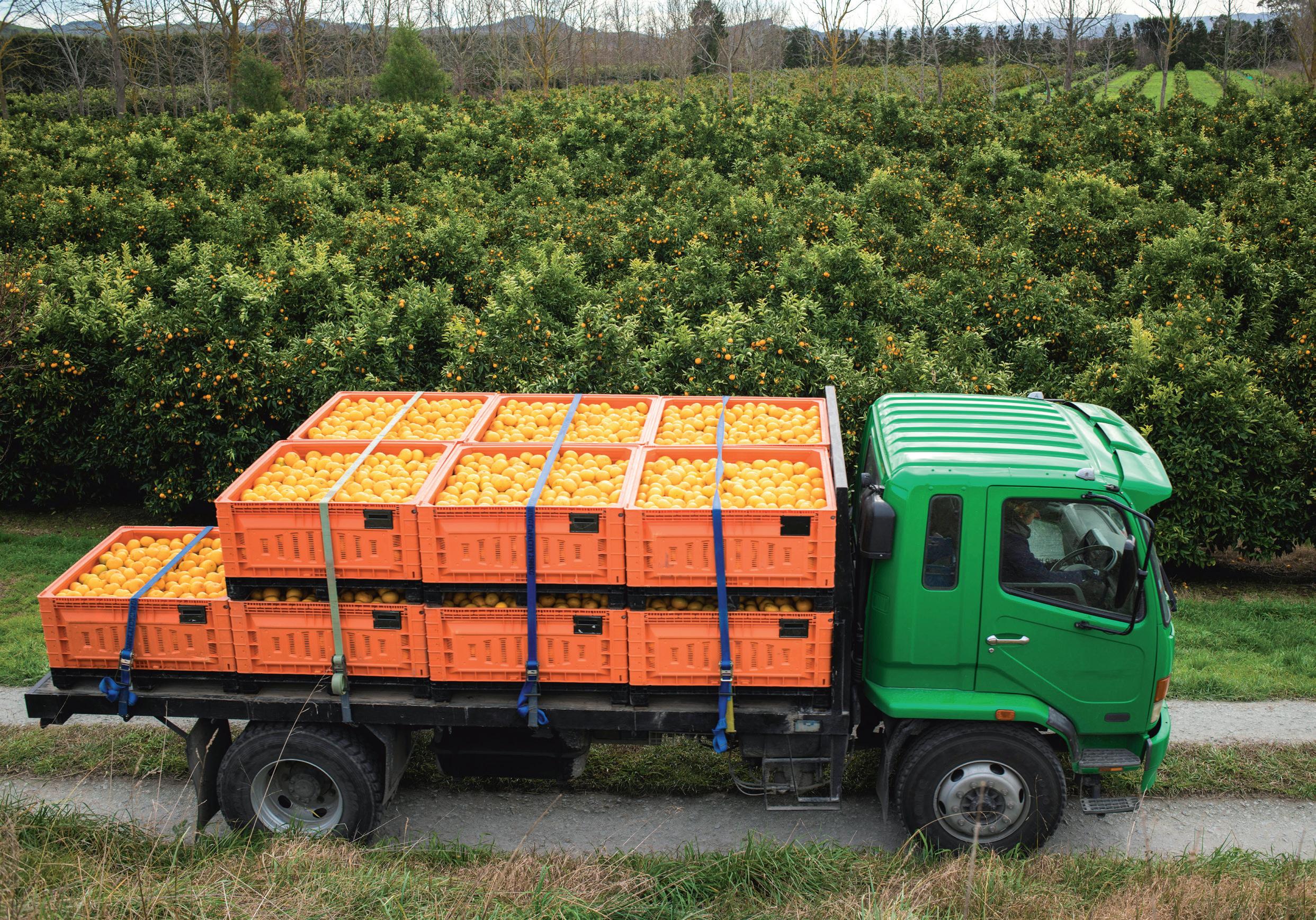
The citrus season is now well underway throughout the country with a huge range of brightly coloured tangy fruit in steady supply from now until December.
12 Meet the Chef: Stephen Barry, Papamoa Beach Village
He started at the bottom, peeling vegetables and washing dishes, eventually climbing the ladder to head chef.
14 Meet the Chef: Fiona Le Gros, Hilda Ross Village
Growing up in Taumaranio, Fiona Le Gros learned to cook from an early age, and is now head chef at the Hilda Ross Retirement Village in Hamilton.
16 Faces of Aged Care: Michelle Barnard, Miriam Corban Village
New Village Manager, Michelle Barnard, is excited for a new challenge and to continue to be a part of people's lives throughout their golden years.
4
contents 10 22
20 Zero Trust Approaach
A recent report by cybersecurity firm CyberArk highlights the increasing threat of cyber-attacks driven by economic conditions, the adoption of AI tools, and workforce churn in Australia
22 Why Aged Care Facilities Should Digitise


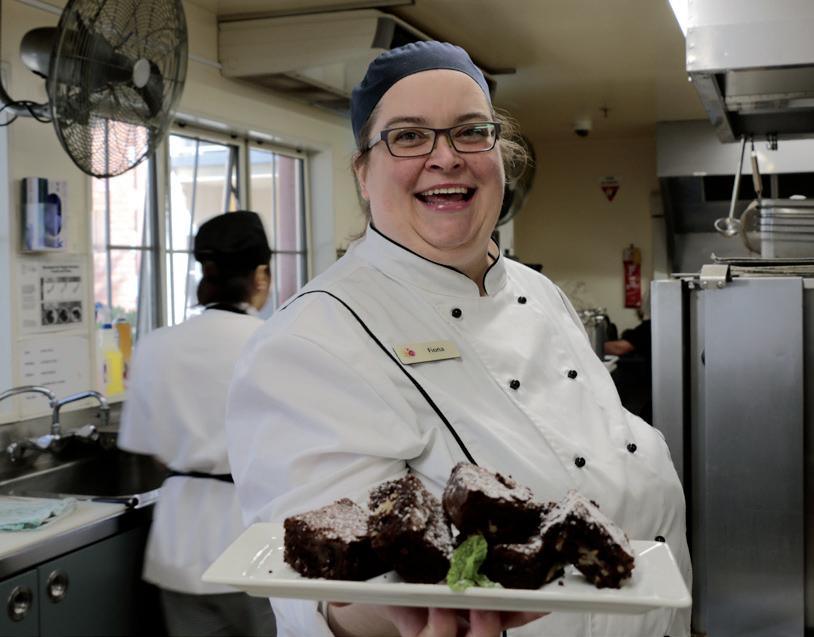

The rationale behind maximising medical equipment performance in Aotearoa's aged care facilities is critical and will achieve several key objectives.

24 Virtual Reality Adventures for Seniors

Singapore's largest eldercare provider, will bring virtual reality to older adults with the purchase of VR equipment from SilVR Adventures.
26 Alleviating Loneliness
Loneliness has long been a pressing issue for aged care residents, and the COVID-19 pandemic only magnified its impact.
30 The Library
16 9 26 14 6 12 5 May/June 2023
Reimagining Better Healthcare
Distrust in AI, low technological interoperability, workforce burnout, and fragmented or limited access to care are the key barriers to achieving a more human and flexible healthcare system, according to a new global study by GE HealthCare.

Two hundred and fifty New Zealand clinicians and 550 New Zealand patients shared their insights in the first-of-its-kind global study that amplifies 7,500 patient and clinician voices seeking to understand the trends and barriers to creating a better healthcare system.
The GE HealthCare – Reimagining Better Health report canvassed respondents from seven countries, including Brazil, China, Germany, India, South Korea, New Zealand, the United Kingdom, and the USA, to understand what clinicians and patients value, what their expectations are and how they see the future of healthcare.
New Zealand clinicians were unanimous in their vision for the country's system, completely or somewhat agreeing that the future hinges on the following:
• Patients and care teams are more intimately linked in a technology partnership.
• Patient care and medical treatment occur both within and outside traditional clinical environments, such as in the home.
Urgent Action Needed for Aged Care Workers

Australia | Over a month has passed since the Federal Budget announced a commendable $11.3 billion commitment to providing a 15 percent pay raise for aged care workers. However, those in non-direct care positions continue to languish in uncertainty. Stage 3 of the Fair Work Commission Tribunal, responsible for assessing these excluded employees, could be delayed for up to twelve months.
As an ardent advocate for positive reform in the aged care
• The healthcare ecosystem is expanding to include a more varied range of healthcare workers, some of which may not be present today.
Amit Yadav, Chief Executive Officer Australia and New Zealand, GE HealthCare, said the study found overwhelmingly that healthcare experiences, which are more human, flexible and focused on the needs of both clinicians and patients, should be a top priority.
"The Reimagining Better Healthcare study revealed that clinicians and patients share many of the same fundamental values and expectations regardless of country, healthcare model, clinical role, experience or demographics," said Yadav.
READ MORE ONLINE HERE
sector, Chris Mamarelis, CEO of Whiddon, emphasises the need for expediting the timing of the Stage 3 Work Value Hearing. As a regional aged care provider, Whiddon relies on these excluded workers, who constitute 26 percent of their current workforce.
The aged care employees excluded from the 15 percent pay increase play a vital role in delivering quality care. Excluding them from the funding is detrimental and leaves them uncertain about their wages. This exclusion affects nearly 20 percent of the total care workforce in the industry, thus underscoring the gravity of the issue. The Government's 2020 Aged Care Workforce Census reveals that 52,801 individuals work in ancillary roles such as cooks, cleaners, and laundry assistants, constituting just under 20 percent of the care workforce excluded from the 15 percent pay raise. As a regional aged care provider, Whiddon sees these exclusions affect 26 percent of their current workforce.
The Fair Work Commission Tribunal conducts the Work Value Case in three stages. Stages 1 and 2 were completed earlier this year, confirming the 15 percent increase in the modern award rates for the included employees. The increase is set to take effect from the first full pay period after June 30, 2023, and has been widely welcomed by the sector. However, Stage 3, assessing the excluded employees, has faced significant delays, potentially lasting up to twelve months.
READ MORE ONLINE HERE
6 NEWS
New Appointment
Pedro Sánchez has been appointed Managing Director of Bupa Villages and Aged Care business in New Zealand. Joining the New Zealand business today and taking over from Interim Managing Director Julie Sellar, Pedro was previously General Manager of Sanitas Mayores SL, Bupa’s residences and aged care business in Spain.
Sánchez joined Sanitas as Operations Director in 2006, becoming General Manager of Sanitas Mayores in January 2021, growing the care home business to a portfolio of 43 care homes and 15 daycare centres.
Bupa APAC Chief Executive Officer Nick Stone said, “It’s
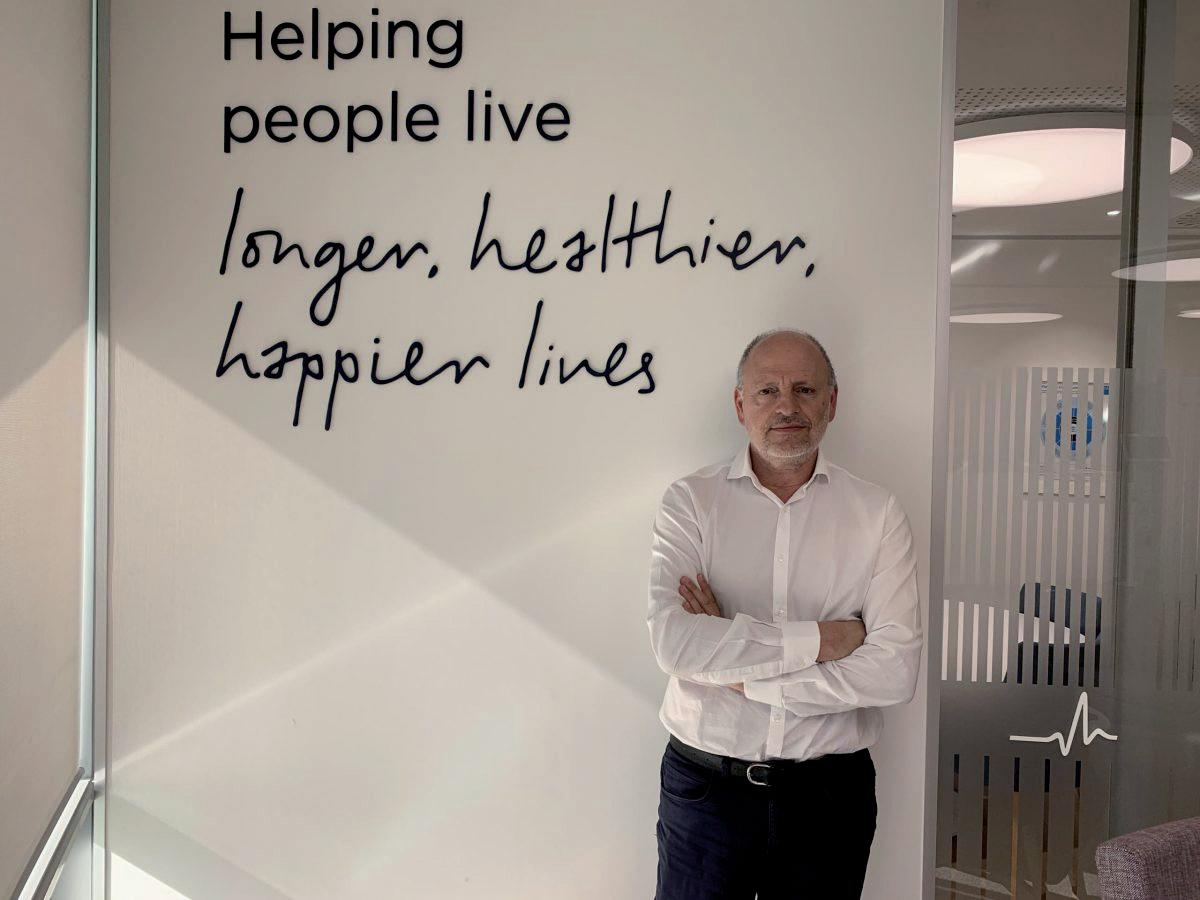
fantastic to have Pedro joining our New Zealand business. He has deep knowledge of the aged care sector and has played an integral role in driving Sanitas Mayores’ success over the last 17 years.
“His significant experience in delivering excellence in resident care and increasing the role of digital technology in the provision of aged care will benefit our business greatly and help build on the momentum created by our New Zealand team,” he said.
“I’m excited to be joining Bupa New Zealand. After a challenging few years dealing with covid and workforce uncertainties, I am confident the business is well positioned for future success," said Sánchez.

“I know already that our nurses, carers and support workers in our New Zealand care homes and villages deliver exceptional care to our residents. I’ve seen it first hand and see immense potential for Bupa to invest in technology, deliver greater service to our Kiwi residents, and make a real difference to people’s lives,” he said.
With Sánchez assuming the role of Managing Director for Bupa New Zealand in June, Interim Managing Director Julie Sellar takes up the role of Deputy Managing Director in the New Zealand business.
“I am extremely grateful to Julie for her dedication and commitment to leading our New Zealand business since August last year. Over that time, she’s faced into various challenges, a global pandemic and natural disasters, with the business emerging stronger as a result of her leadership,” he said
SAVE TIME AND ENERGY WITH MENU MASTER
Microwave ovens cut energy costs by only using energy when cooking. Menu Master Xpress range has convection and forced air options that maintain crispness and freshness. For fast and easy cooking, Menu Master saves your staff time and you money. ONLY

YOUR KITCHEN. For more information call 09 444 9078, email sales@cooktech.co.nz or visit www.cooktech.co.nz
THE BEST FOR
7 May/June 2023
Legislation Outdated and Unfit for Purpose
Retirement village legislation is at risk of becoming outdated and unfit for purpose, requiring urgent review to eliminate unfair contract terms and better protect consumers' rights.

The CFFC has released a report and recommendations following public consultation on a discussion paper studying the effects of the complex legal framework governing the retirement village sector.
Nearly 3300 submissions were received, with most from individuals and the Retirement Village Residents’ Association; others came from operators and other stakeholders, including lawyers, supervisors, and consumer advocates.
“Retirement villages provide an attractive option for some older New Zealanders, and they are well-marketed. However, in the 20 years since the legislative framework was established, there has been no review to assess whether the balance of power between operator and consumer is appropriate,” said Wrightson.
“We found competing tensions that are unresolved, and recommend a full review of the framework be carried out urgently.”
Submissions backed up concerns expressed in the CFFC’s paper regarding the resale process, weekly fees charged after a resident vacates a unit, flaws in an overly complicated complaints system, confusing documentation, and the tricky interface between village and care facilities.
“These issues are important because it is difficult to leave a village once contracts are signed. Residents are neither owners nor tenants, and their consumer protections are limited,” said Wrightson.
“It is therefore important that fit-for-purpose legislative protections are in place.”
Almost all individual submitters, the residents’ association and a large majority of other stakeholders, including the New Zealand Law Society, supported a full review of the regulatory framework.
Operators and the Retirement Villages Association (RVA) did not support a regulatory review but agreed some areas might need improvement. These are related to improving disclosure for entering a village and transferring to care. There was general agreement that the resale process should be reviewed to ensure better disclosure, but no consensus on
legislating specific changes. Some operators agreed on the ongoing payment of weekly fees after a resident exits a village needed to be looked at, with a view to setting limits. There was also consensus that more needed to be done to clarify responsibility for repairs and maintenance of chattels in individual village units.
“However, the wide-ranging concerns expressed in the individual submissions, and those of other stakeholders, suggest that focussing only on these limited areas is not sufficient to ensure a fair and balanced regulatory environment,” said Wrightson.
The RVA recently offered to look at improvements in a few areas in a “blueprint” created in response to the CFFC review. Although the CFFC welcomed and encouraged the best practice approaches suggested in the blueprint, these measures should be considered an interim step.
“We do not believe they are sufficient in scope or impact to circumvent the need for a full review. The retirement village sector is growing, and if the Government does not review the regulatory framework now, New Zealand runs the risk of ending up with a weak framework that does not properly protect older consumers and their families.”
The CFFC has offered to assist in drawing up the Terms of Reference for the review and support the Ministry of Housing and Urban Development in undertaking it.
In the meantime, Wrightson said there were some areas where work could be carried out by the CFFC and the retirement village sector to ensure better outcomes in the short term while a review took place. These “interim recommendations” included a review of contracts to identify and remove unfair terms, the appointment of an RVA Disciplinary Authority to deal with serious complaints about operator behaviour, and the supply of data to the CFFC regarding resale times and the processes villages follow in terminating financial charges after exit. This would provide insights into which operators were following best practices, and where there were issues that may require further investigation.
“Through its monitoring and oversight function, the CFFC has raised many of the issues covered in the discussion paper in previous years. Change has been slow, and the submissions we received confirm that many important issues remain unresolved and problematic,” says Wrightson.
“A piecemeal approach to change is insufficient. The industry has grown in scope and complexity since the framework was drawn up, yet it is still young. In the interests of both consumers and operators, it’s time the balance was reset.”
8 NEWS
Major Changes to Rebuild
Australia | The Australian Nursing and Midwifery Federation (ANMF) applauds two significant achievements to rebuild the aged care sector, which will come into effect on 1 July 2023. Legislation to implement Registered Nurse (RN) 24/7 comes into operation, and historic wage increases following the Aged Care Work Value decision will start to flow through to nurses and carers in the sector.

These critical measures will go a long way in rebuilding the aged care sector and will help deliver improved care outcomes for elderly residents living in nursing homes.
As the country’s largest union, the ANMF and its members have long campaigned for better, safe staffing levels in aged care, in line with the key recommendation of the Royal Commission into Aged Care Quality and Safety.
ANMF A/Federal Secretary Lori-Anne Sharp said the legislated requirements for an RN to be rostered in a nursing home 24/7, along with $11.3 billion in Federal Government funding for pay increases for nurses and carers, provides hope that meaningful and long-awaited change is beginning.
“This is a day where we can pause for a moment to celebrate the extraordinary efforts of ANMF members in the fight over decades for safe staffing and better pay. We hope that aged care nurses and carers will have a little more spring in their step as they see these results roll out,” said Sharp.
Historically, persistently low wages, chronic, dangerous understaffing and other poor working conditions have resulted in an exodus of qualified nurses and aged care workers, making it extremely difficult to attract qualified staff to the sector.

“This is the first time in over 20 years that a Government has shown that it truly values aged care nurses and care workers and, in doing so, the people they care for.
“The Government has assured the ANMF that it is funding a pay increase for all eligible workers in aged care to recognise the incredibly important work nurses and care workers do each and every day, caring for older people across the country.
“The ANMF has worked and will continue to work with the Government to develop clear guidelines for the process of passing on the funding in full as wage increases. We will also continue to work with the Government on accountability and transparency for the taxpayer funding dedicated to wage increases to ensure it is used solely for its intended purpose – long overdue and very well-deserved wage increases for aged care workers.
READ MORE ONLINE HERE
We make serving up food & beverages
As a one stop shop, we make buying everything you need easy, and we’re focused on helping your bottom line. gilmours.co.nz

a whole lot easier.
9 May/June 2023
Diverse Range of Citrus Right through to Christmas
The citrus season is now well underway throughout the country with a huge range of brightly coloured tangy fruit in steady supply from now until December.
itrus New Zealand Chairman, Wayne Hall said the 2023 crop is set to be a good one.
“While damage was sustained on citrus orchards this year following Cyclone Hale and Gabrielle, our growers have worked hard to ensure the crop is available and tasting great. A big shout-out to the citrus growers in Northland, Waikato, Bay of Plenty, Tairāwhiti and Hawkes Bay.”
The easy-peeling Satsuma mandarin harvest started in April and this lunchbox favourite makes up about 25 percent of the country’s overall citrus production of about 31,000 tonnes.
“An industry character once said – ‘everybody loves an easy-peeler’, and they couldn’t have been more correct, Satsumas are in high demand right through winter as an onthe-go healthy snack,” said Hall.
Limes are another of the first fruits of the citrus season, available since the start of autumn with supplies lasting through to the end of June. The main variety grown here is the Tahitian (Bearss) lime with smaller quantities of Mexican (Key) also produced. Imported varieties will be available outside of the New Zealand citrus season.
Picking of our lemon and early Navel orange crops began in May with good supplies forming the mainstay of winter fruit displays this month. New Zealand grows a relatively unique type of lemon, the Meyer cultivar, which is common both here and in the United States, but rare elsewhere.
“The Meyer is the deeper yellow-coloured, rounder lemon that you’ll find on the shelves. It looks like this because it is a natural cross of a lemon and a mandarin/pomelo hybrid. Amazing flavour and available in the middle of winter,” added Hall.
The firmer and lighter coloured Yen Ben variety are also available, they have a sharper flavour profile to the Meyer.
Citrus New Zealand runs a specific seasonal programme to monitor the quality of our locally grown Navel oranges supplied to Countdown and Foodstuffs. This monitoring measures Navel orange quality against the Citrus NZ BrimA
(Brix/Acid) quality standard. Brix is a measure of natural sweetness and the Brix/Acid ratio is an objective measure that reflects consumer acceptability.
“Consumer acceptability during the 2022 season reached 99 percent which is great for lovers of our fantastic NZ grown Navel oranges and bodes well for another superb season in 2023,” said Hall.

As winter weather eases and spring begins, growers will be picking grapefruit, tangelos and Afourer mandarins.
“The Afourer variety of mandarin arrive in September as Satsuma volumes begin to taper off. They’re a deeper orange colour to Satsumas with a sweeter taste. This seedless variety are supplied right through to December,” said Hall.
The 2023 Grapefruit crop is grown on just a handful of around 20 orchards. The annual harvest of around 370 tonnes will be available from June through to October.
“While grapefruit are tarter than their other citrus cousins, they’re still a popular breakfast choice for a core group of customers,” said Hall.
“Tangelos are another smaller crop to look out for in spring. They’re a mandarin/grapefruit hybrid which will provide your customers with a fresh flavour profile and another great source of Vitamin C.”
10 COLUMN

JOIN THE CLUB TO SHOP WITH US TODAY gilmours.co.nz
Meet the Chef STEPHEN BARRY
Papamoa Beach Village
e fell into the role of being a chef at the age of 13 when his parents purchased their first restaurant, the Aorangi Peak restaurant in Rotorua. He started at the bottom, peeling vegetables and washing dishes, eventually climbing the ladder to head chef.
Barry has worked at several top restaurants in the Bay of Plenty region, including having been the owner and head chef at Mount Bistro for the past 14 years. The only reason Barry chose to close the restaurant was that the building had to go under remedial work. Owning this restaurant has been one of the highlights of his career.
Switching gears to a different kind of kitchen, Barry is now a chef at Papamoa Beach Village, a Metlife Care retirement village 11 kilometres away from Tauranga’s city centre. He said that the

transition has been delightful, with more time on his hands to spend with family and friends.
“There is a great sense of community spirit in the village. It is like working at a holiday resort, with something different happening daily. From special events and dinners to cooking classes and happy hours,” said Barry.
Having been at the Papamoa Beach Village for just over two years, Barry has discovered it's not just all pureed food and smoothies. The care home has food available for residents 24 hours a day, seven days a week, supplying breakfast and snacks, with a three-week rotational menu of morning and afternoon tea, soup, sandwiches, a light meal, and two choices for a main meal with dessert and supper. The meals are also made for delivery to independent living villas too. A cafe is also open seven days a week, and a couple of happy hours every week in the village’s pavilion dining room.
12
FOOD
Stephen Barry has been part of the restaurant industry for most of his life.
Being a retirement village, various occasions require catering, such as birthdays, anniversaries and other special events. There are also themed dinners, such as an upcoming mid-winter Gatsby party.
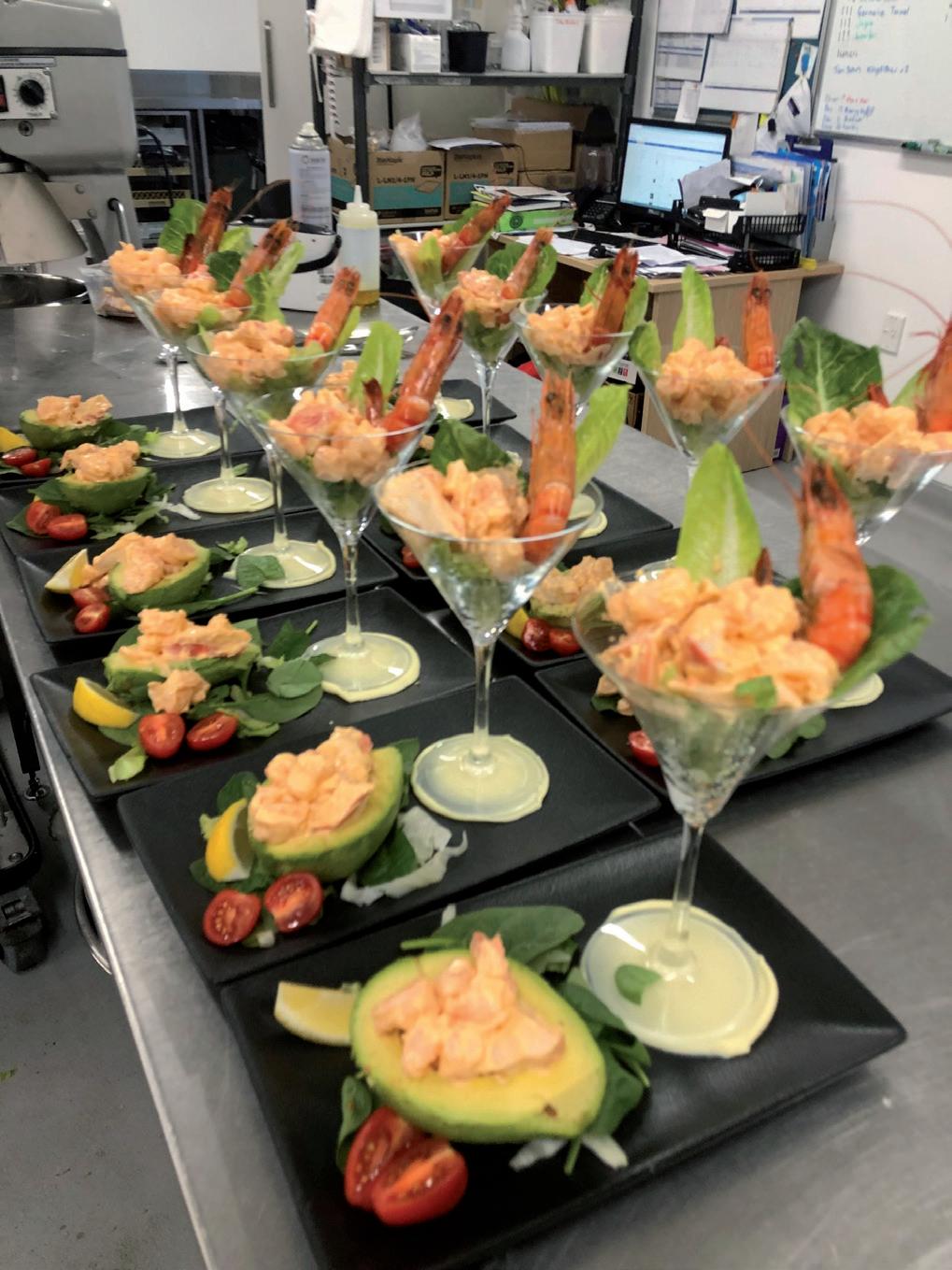
Barry enjoys cooking all types of foods, from sweet to savoury. He took up hunting a couple of years ago and enjoys being able to cook the meat he has sourced himself.
Barry said he considers the customer the most essential person in the kitchen.
“They all have different wants and needs, whether you’re in fast food, fine dining or aged care. As a chef, you are there to ensure the food is cooked correctly, presented well, and your customer is happy and enjoys their experience.”
Throughout his career, Barry has won several accolades for his work. He became a New Zealand Beef + Lamb Platinum Ambassador and the national winner of the Monteith’s Beer and Wild Food Challenge. Barry mentioned that entering
various cooking competitions challenges chefs to be creative and gives customers a chance to be adventurous with food.

When it comes to beginners in the current industry, he said that they need to have the passion to last. He noted that many young chefs have a dramatised idea of the industry from what they see on television and in movies, and although a demanding role, he wouldn’t change it for the world. The thrill and adrenaline rush during service and how work colleagues become a second family make it all worthwhile.
Now at 60 years of age, Barry has enjoyed being able to pass down some of his knowledge to his team in the kitchen and younger generations. He joked that the residents of the Papamoa Beach Village often need reassurance that he has no plans to move on. He always replies that he will be there until he has trained someone to look after him when he moves in as a resident himself.
13 May/June 2023
Meet the Chef FIONA LE GROS
Hilda Ross Village
Growing up in Taumaranui, Fiona Le Gros learned to cook from an early age, and is now head chef at Hilda Ross Retirement Village in Hamilton.
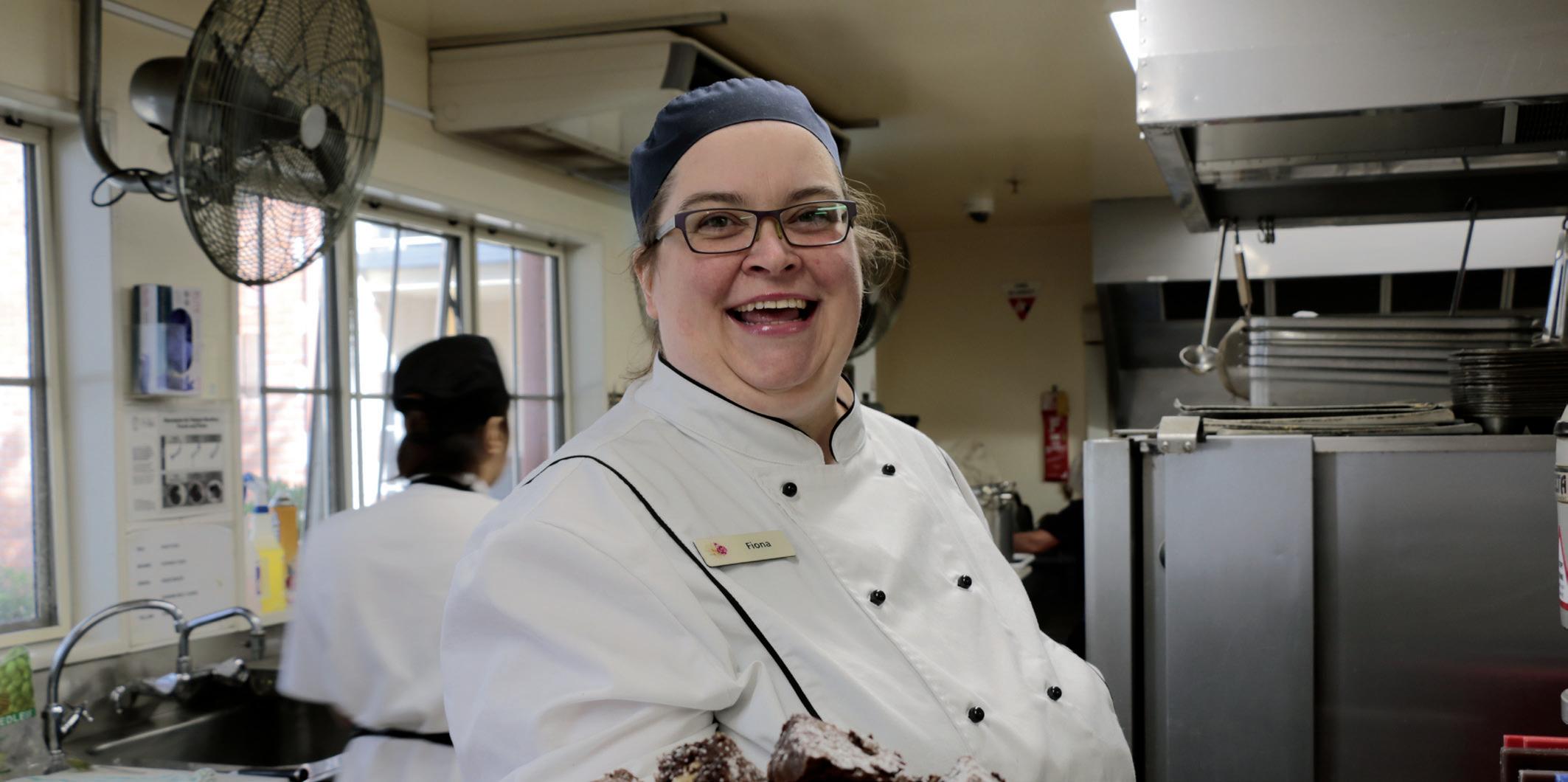
ith her mother was a home economics teacher, and having spent a couple of years in France, she fell in love with bakeries. After teaching English for a while, and
then working as an assistant manager at a service station in Hamilton, Le Gros decided it was time to pursue her passion. After training and interning at a restaurant, Le Gros was lucky to be kept on for the next ten years. When her employer transitioned from fine dining to a cafe, she adapted with him.
Her introduction to the retirement village sector was due to her mother becoming a resident of aged care. Le Gros was convinced she could do a better job than what was being served and thought she would have a go. She found the hours were better and that night shifts were far less frequent than those in the cafe.
Part of being a chef in a retirement village is bringing an element of nostalgia to the dishes she makes.
“I like to go back to things they know or things we used to have when we were kids, especially hot desserts. They really spark memories for our residents,” said Le Gros.
As head chef of the kitchen’s team of ten, they cater for around 150 residents in the care centre daily, and 40 once a month for fine dining. The current team has been working together for a few years now, which Le Gros described as being smooth working and consistent.
The menu will often feature various dishes that have been steamed, slowly cooked, and soft food, but Le Gros reassures that there is no substitute for flavour. There is no gas in the kitchen, which is quite unheard of for the industry, so everything is cooked in the oven, or on the electric hob. The menus Le Gros prepares are all planned and prepared for nutritional balance, allowing experimenting with flavour and technique.
Le Gros stays up to date with trends and modern techniques within the culinary world, and implements them in her cooking. An extensive collection of cookbooks as well, allows her to research flavours and meals that may be of interest to the residents.
One trend that she would like to see mainstreamed into retirement villages around the country is the use of plantbased options. She finds the concept interesting and the flavour to be spot on. Dietary requirements, such as glutenfree, are also becoming increasingly frequent in the aged care sector, which Le Gros said is something to watch.
Le Gros finds that there is a lot more loyalty and length of service in her sector than in other kitchens that she has worked in.
“It takes time, effort and energy to train a person, so it’s really nice to have all the staff trained well. You can get ideas and input from people because they’re not focused on ‘what do I do now?’ but instead on ‘what can I do better?’ and that’s how people develop and progress.”
The opportunities in the retirement village sector for chefs are something that Le Gros finds particularly interesting. She is curious about how operations work, and how she can visit another village to share resources. She believes that various possibilities allow staff to learn and further develop skills.
When working at the cafe, Le Gros had the job of preparing the vegetables before cooking. Now at the Hilda Ross Village, she orders them pre-prepared, which she added is a big time saver that can equate to the cost of labour as well.
There are still areas that Le Gros would like to work on, which she said will come in good time.
“Sometimes it’s good when people are on leave or sick because other people have to step up and do a different role for a day, and you see the smile on their face when they realise they can do a different role and give them opportunities to move around the kitchen.”
14 FOOD

Faces of Aged Care MICHELLE BARNARD

Miriam Corban Village
New Village Manager, Michelle Barnard, is excited for a new challenge and to continue to be a part of people's lives throughout their golden years.
arnard made the decision to move to New Zealand after hearing about how it is a great place for families to live during a seminar in Cape Town. Leaving her hometown of Hermanus in South Africa with her two daughters 13 years ago allowed her to have a fresh start, and she is now a proud citizen.
Being at the heart of the village and making connections with people are rewarding parts of her job.
“My favourite thing about working for Ryman is the amazing people I work with. It’s a real people-focused job, and I love being able to connect with so many people,” said Barnard.
Barnard first joined Ryman Healthcare 10 years ago, initially as the Activities Coordinator at the Evelyn Page Village. From there, she became the Assistant Manager and then Resident Services Manager.
In recent years, Barnard relocated once the Murray Halberg retirement village opened in the Auckland suburb of Lynfield, before moving to the William Sanders Village.
“Being a Resident Services Manager helped a lot in preparation for running a village. I dealt with
all the inner workings, and it’s that experience that led me here.
Part of the connection that she has to the villages is the people she works with. Barnard has formed relationships with both staff and residents of the villages where she has worked at. She finds the laid-back culture to be a term of beauty and calm, and she views being in a people-focused environment as an opportunity to meet new people. With none of her family in New Zealand, Barnard considers working in the heart of a Ryman Village like adopting a new family.
Barnard is now the Manager of the Miriam Corban Village in Henderson, and her focus is to build a village with a great sense of culture and communication. She added that residents like to see that things are getting done within their village, and always appreciate being communicated with. She has considered this to be a chance to shape the future of the village.
“It’s exciting. I’ve met so many wonderful people here and can’t wait to see the village grow.”
The Miriam Corban Village is continuing to grow, with an increase in resident move-ins recently and the opening of a new care centre coming in the near future.
16
FACES
Work-based learning for your whole team
“Education is at the core, because only if our staff have the right knowledge and skills, can they do their job well.”
Our suite of work-based training programmes covers entry level through to advanced specialist and leadership and management.
Talk to us about how we can help you to upskill your care and support team via our work-based training and apprenticeship programmes. Ask about the Apprenticeship Boost Fund, available until end 2023.
careerforce.org.nz/aged-care
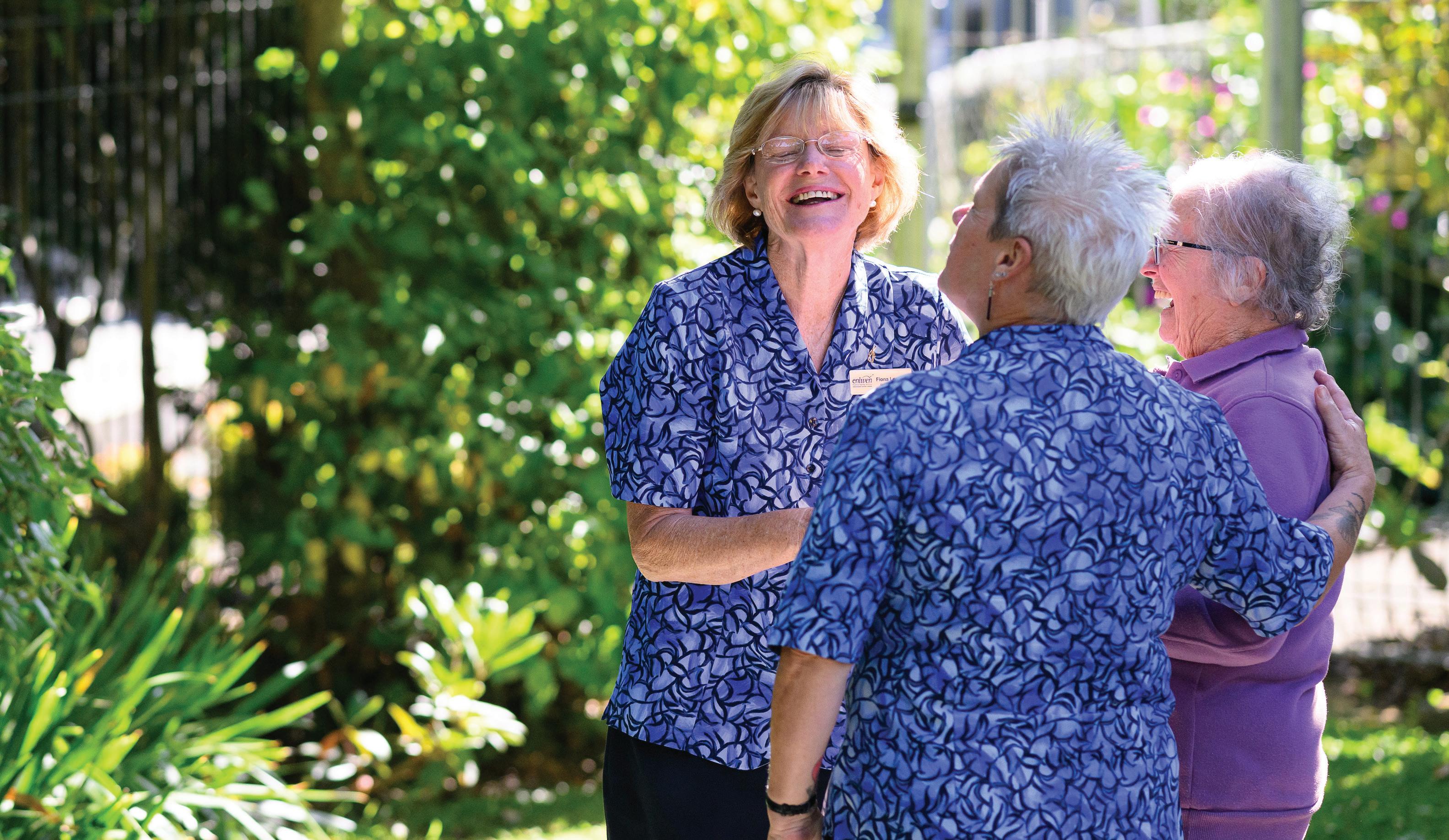
Franziska Gloor, Village Manager at Hoon Hay Rest Home, Christchurch
Careerforce is a business division of Te Pūkenga
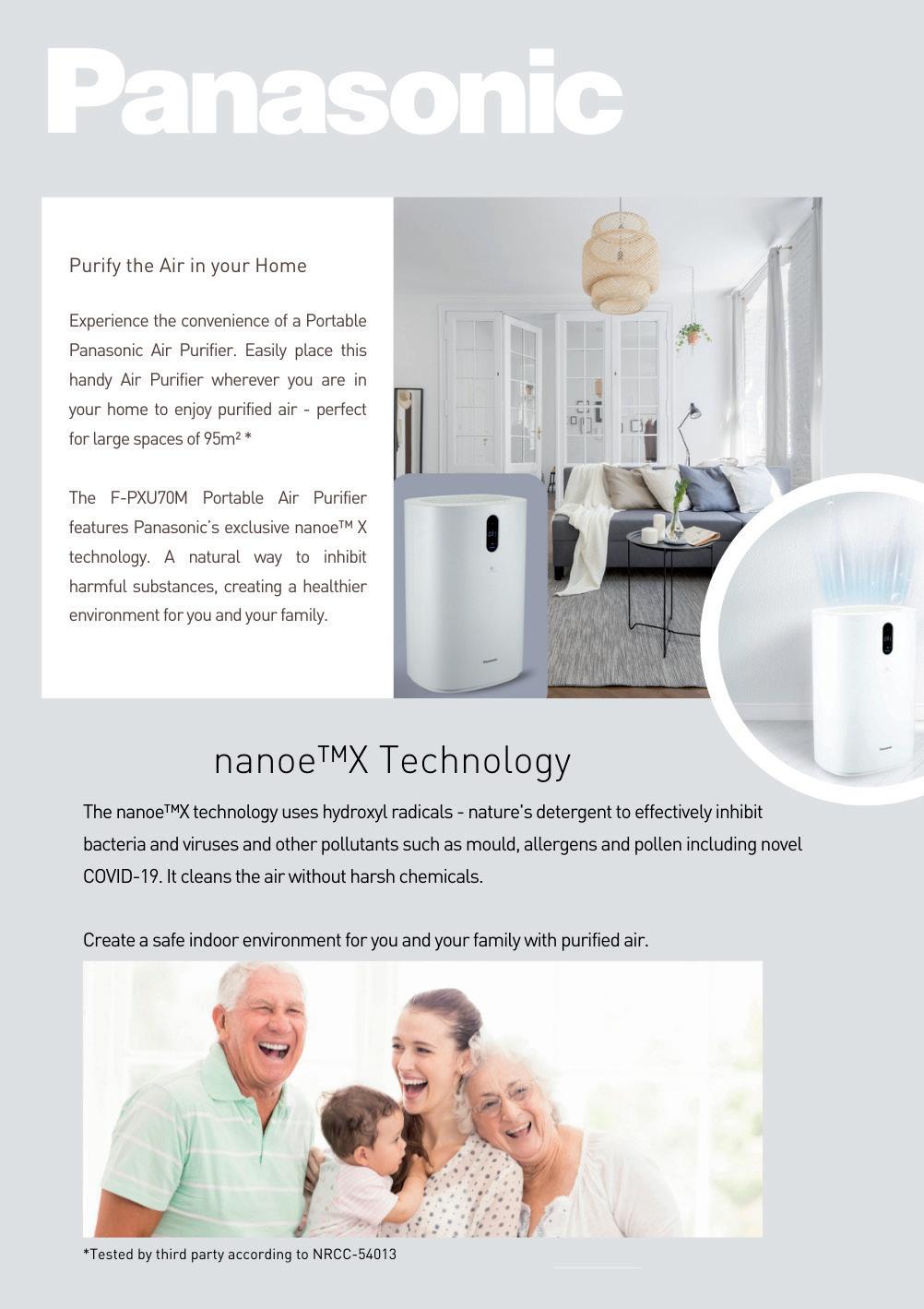

Zero Trust Approach
Australia | A recent report by cybersecurity firm CyberArk highlights the increasing threat of cyber-attacks driven by economic conditions, the adoption of AI tools, and workforce churn in Australia. The CyberArk 2023 Identity Security Threat Landscape Report sheds light on the potential risks Australian organisations face as the number of human and machine identities grows, outpacing cybersecurity investments.
he survey findings show that 91 percent of Australian respondents experienced at least one ransomware attack, underscoring the alarming prevalence of such incidents. Moreover, a staggering 98 percent expect their organisations to suffer identity-related compromises in 2023, with 52 percent attributing these incidents to digital transformation initiatives, such as cloud adoption or legacy app migration.
The report also emphasises the potential cybersecurity challenges arising from employee churn and layoffs, with over two-thirds of organisations anticipating such issues in 2023. Additionally, more than two-thirds of Australian organisations admit their inability to prevent or detect attacks originating from their supply chains, highlighting the need for enhanced security measures.
The study identifies AI-enabled threats as a major concern, with 89 percent of security professionals expecting them to impact their organisations in 2023. AI-powered malware ranks as the top worry among respondents. Furthermore, the report reveals that 57 percent of affected organisations in Australia resorted to paying ransom demands multiple times, suggesting the rise of double extortion campaigns.

The expanding identity-centric attack surface poses a
significant risk, as both human and machine identities are targeted in attacks. Employee identities, including contractors, are deemed the riskiest human identity type by 44 percent of Australian organisations. Credential access remains a critical area of vulnerability, with 39 percent of organisations considering it the biggest risk. The report also highlights gaps in securing the highest-sensitivity employee access and a lack of comprehensive visibility into human and non-human access to sensitive data.
The report stresses the need for immediate action to mitigate these risks and ensure long-term cyber resilience within organisations. CyberArk recommends aligning with a Zero Trust approach and prioritising identity security and endpoint security/device trust. Key measures planned by Australian organisations for 2023 include eliminating embedded credentials, monitoring access to SaaS applications, removing standing access for third-party vendors, and implementing least privilege access principles for critical applications.
As businesses in Australia continue to pursue digital and cloud initiatives to drive efficiency and innovation, addressing the growing cybersecurity challenges posed by economic pressures, AI tool adoption, and workforce dynamics are crucial.
20 TECH
A Nurse Call System That Gives You
More Than Just Alerts
Smart, Responsive Aged Care with Advance Care
· Alerts and call buttons at your fingertips
· Real time location tracking of both people and assets built in · Hassle free reporting out of the box
It’s vital that residents can not only get help when they need it, but that you also have a system that supports your team to provide them the best level of care possible. The Advance Care Nurse Call System delivers more than just alerts, it’s a comprehensive solution that elevates the level of care your facility offers.

We are the official supplier of Advance Care in New Zealand

21 May/June 2023
DUNEDIN 03 466 3030 CHRISTCHURCH 03 365 0333 AUCKLAND 09 307 1540
securityspecialists.nz/advancecare
Why Aged Care Facilities Should Digitise
COLUMN | By Mathews Varughis, Sales Manager for New Zealand at Paessler. The rationale behind maximising medical equipment performance in Aotearoa’s aged care facilities is critical and will achieve several key objectives. These include improved quality of care, better communication and improved support for patient and workforce needs.
hen this medical equipment operates without monitoring and digitisation, aged care facilities can't operate at their full potential and resolving any issues can demand extra staff resources, which are scarce due to issues with pay parity with other health sectors.
Aged care nurses are being paid up to NZ$20,000 less than nurses who Te Whatu Ora employs in public hospitals, and that is the leading cause of nurse shortages and bed closures in aged care facilities. More than 1,200 aged care beds have closed in the last year due to this severe shortage of registered nurses.
Why the aged care sector needs device monitoring
The devices propelling the aged care sector are transformative to the quality of care staff can offer residents. For example, the nurse call button, which now seems so obvious it blends into the background, once saved nurses hours a day spent doing regular patient visits. However, these devices are rarely digitalised or connected to the network in an aged care setting, so they cannot be monitored to ensure they are working correctly.
Digitisation involves the integration of these critical devices into a centralised monitoring system, enabling connectivity that streamlines the movement and access of information while monitoring the condition of the equipment.

22
TECH
Before an aged care facility digitises, the essential devices that staff rely on to offer quality patient care cannot always be relied upon. Considering patients' well-being and health depend upon these devices to differing degrees, the risk of them becoming faulty, malfunctioning or breaking during their use creates omnipresent concern.
Integrating medical devices into the Internet of Things (IoT) can automatically manage their functionality and operating status. More than this, it can transfer sensor information to electronic health records, creating a network of information accessible to healthcare workers 24/7.
The pandemic triggered a much-needed focus on digitising health care, but now that its immediate effects are receding, integrating medical devices remains just as crucial.
Why aged care facilities should digitise
Frontline connectivity enhances resource efficiency. Frontline workers and clinicians have had to adapt to remote and virtual working methods. Many practices adopted over the first two years of the pandemic are now integrated into regular processes because of their effectiveness. It's easy to understand why.
Utilising electronic health records (EHR), videoenabled technology, and secure remote connectivity enables frontline workers to be better equipped to coordinate patient care across departments. However, this virtual way of working comes with the risk of information gaps and privacy concerns without connectivity to the IoT.
The IoT brings together staff, patients, data, processes and equipment for optimised workflows. Integrating clinician and frontline devices to the IoT allows teams to continue to work remotely, synchronises their devices and provides immediate access to updated patient profiles. It also adds efficiencies like care prompts and reminders, accelerates treatment, minimises delays and maximises time for clinicians, providing a much more cohesive patient and staff experience.
Point of Care solutions needs monitoring to harness benefits
As healthcare data analytics and artificial intelligence advance to support aged care patients, monitoring Point of Care (POC) solutions is not a luxury but a necessity. Mobile devices and POC devices gather patient information automatically. This improves accuracy and efficiency, enabling communication between healthcare workers and increasing the speed and quality of care. If they're not connected and monitored through an overarching IoT system, the inefficiencies and inaccuracies of the system mean the rapid turnaround time that POC offers can't be fully achieved.
Equipment involved in data-heavy healthcare
Advanced medical equipment, such as devices
used in radiology, requires unique scanning protocols performed regularly. Due to the advances in imaging technology, the volume of exam data has multiplied too. Radiology departments need more efficient processing, which AI-based and centralised IT monitoring can deliver. Digitisation can optimise imaging workflows, exam setup, protocol management and patient positioning.
Greater homecare capabilities and support
Wearable devices support homecare and aged care facilities by tracking vital patient information and automatically updating the EHR. It allows highly efficient recording and a more mobile workforce, where resources are spread to optimise performance. Diagnostics and wearable devices demand staff to check the devices regularly, and they can only totally rely on them if they're monitored and connected to a network. Residents and patients have a severe health risk when no one is informed that wearable devices have stopped working.
In the homecare portion of the aged care sector, wearable devices are increasingly sophisticated. If patients step out of regular timeframes in their routine, they can notify staff of a possible mishap. These intelligent systems have powerful resource benefits, but again, they're only as beneficial as they are reliable, and integration into IT monitoring can remove any doubt regarding reliable usage.
The takeout
From patients, nurses and clinicians, the data involved in aged care and equipment used, digitisation positively impacts every cog in the aged care sector. In such a tightly resourced industry, centralised IT monitoring is a multifaceted solution that will unburden staff and realise the potential of medical equipment already in place.
23 May/June 2023
Integrating medical devices into the Internet of Things (IoT) can automatically manage their functionality and operating status.
Virtual Reality Adventures for Seniors
Singapore | St Luke’s ElderCare (SLEC), Singapore’s largest eldercare provider, will bring virtual reality to older adults with the purchase of VR equipment from SilVR Adventures.
ward-winning Melbourne company SilVR Adventures provides turnkey VR solutions across care centres and community-based facilities, connecting up to thirty care recipients at once. Participants can immerse themselves in iconic locations around the world, places from their past or social settings, where they can share memories, stories, and interactions to nurture relationships.
The technology aims to improve participants' mental health and well-being by encouraging social interaction, stimulating memories and sparking joy through vibrant, meaningful experiences.
“As a healthcare service provider with over 25 senior care centres in Singapore, a nursing residence and active ageing centres, we are constantly innovating and equipping our premises with technology to support active ageing," said SLEC’s spokesperson.
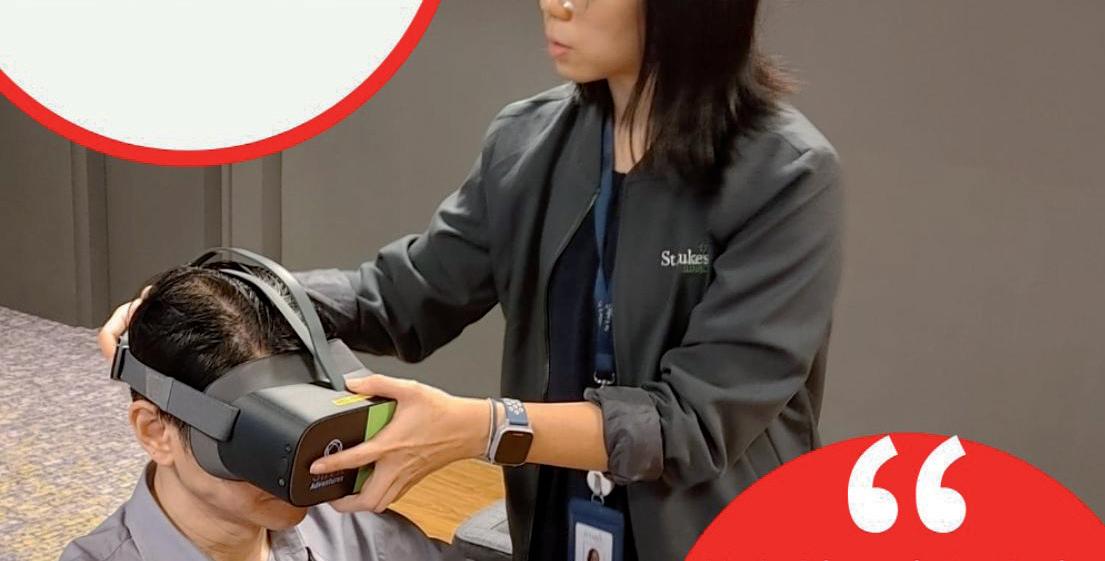
“We believe introducing virtual reality to our elders will improve their mobility and train their cognitive abilities, which is especially useful for those with dementia or at risk of developing dementia.”
Research has shown that loneliness and isolation in later life contribute to poor well-being and significant health problems (1). VR can help reduce symptoms of anxiety, increase acceptance and effectiveness of treatment, and give participants the confidence to get involved by removing physical and mental barriers (2) (3). It also helps stimulate memories for people with dementia, reduce aggression and improve interactions with staff (4).
SilVR Adventures’ founder Colin Pudsey said SilVR Adventures was delighted to partner with St. Luke’s Eldercare in its first expansion into the Asia-Pacific.
“Loneliness, social isolation, and cognitive decline among the elderly are growing global problems, and we have proven results in improving quality of life through meaningful and shared virtual reality experiences,” Colin said. “It’s hugely exciting to be able to bring joy to thousands of older adults in Singapore and deliver experiences in local languages with the recent launch of our multilanguage VR content solution.”
SilVR Adventures began in 2019, growing exponentially in ANZ during the COVID-19 pandemic when lockdowns left elderly people more isolated than ever before. The company quickly adapted its technology to bring larger numbers of people together, no matter where they were.
SilVR Adventures was a winner in the Future of Ageing Awards 2020, a finalist in the InnovAgeing National Awards 2021 and Eldercare Innovation Awards 2021 and named one of 2021’s top 500 global start-ups. They have dementia-based research with Deakin University - supported by the Aged Care Research & Industry Innovation Australia (ARIIA), and strategic partnerships with major organisations like Optus, Amazon Web Services and La Trobe Innovation and Entrepreneurship. To learn more, visit: www. silvradventures.com.au
24
TECH
Digital Boost helped Caroline perfect her website for free.
MAKE THE INTERNET WORK FOR YOU
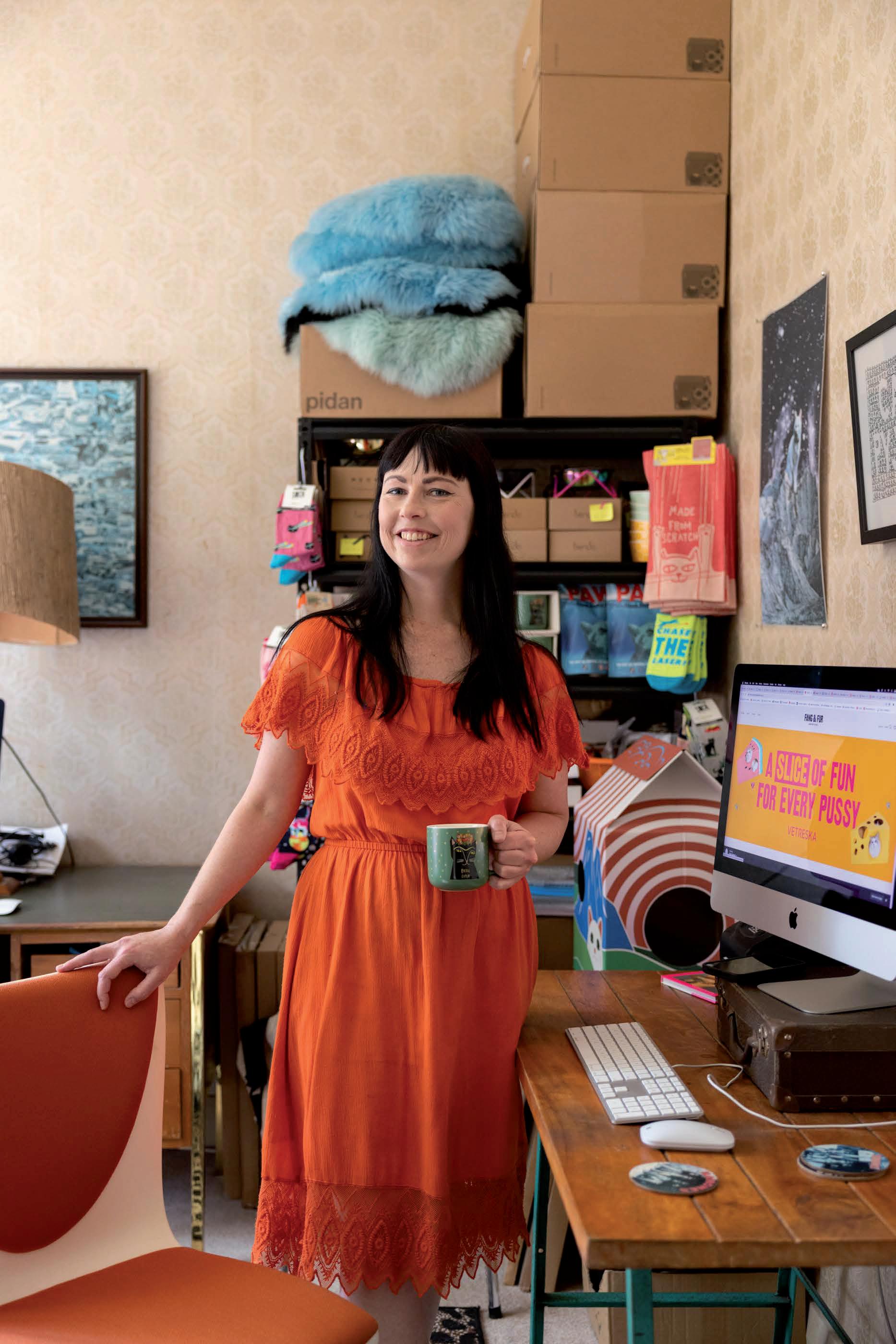
Alleviating Loneliness
Loneliness has long been a pressing issue for aged care residents, and the COVID-19 pandemic only magnified its impact. Loneliness in aged care should be viewed as a personal and social issue, as it stems from a lack of meaningful social relationships influenced by societal values and contexts. The stigma surrounding loneliness leads to "silent suffering," as many residents prefer not to share their feelings with family and friends.
mental health impacts of loneliness.
Financial constraints can also hinder the widespread implementation of ambitious technological goals. The introduction of robots and AI in aged care should be part of a comprehensive suite of services rather than isolated solutions. Ensuring that these technologies genuinely contribute to high-quality care and complement existing practices is crucial.
Promises regarding the capabilities of robots and AI in aged care often overlook the need for infrastructure conducive to technological innovation. In striving for quality relationships and meaningful interactions, aged care providers should recognise that digital technology can adversely affect residents needing more external social networks or families who are not actively engaged.
nternalising guilt and self-blame become common, despite residents having no control over their visitors or relationships. This stigma of loneliness further exacerbates other stigmas associated with aging, frailty, and the need for aged care.
While technology presents a range of benefits for aged care, including improved resident safety and streamlined administrative processes, it is essential not to rely solely on it to combat loneliness.
While pet robots and artificial intelligence (AI) companions have gained popularity, they may not fully address the complex social needs and negative
During the pandemic, digital technology benefitted seniors when used for rich interactions such as playing with grandchildren or catching up with friends and other family. However, superficial conversations and brief video calls often left residents feeling more disconnected and lonelier.

To bridge the digital divide, aged care providers can be pivotal in promoting digital literacy education among seniors. Encouraging residents to use technology for social interaction, such as video calls with loved ones, should be accompanied by regular training to foster independence. Proficient residents or volunteers can also contribute by assisting others, thus fostering meaningful relationships that combat loneliness.
Ultimately, technology should serve as a tool for real-life companionship rather than a substitute for it.
26
TECH

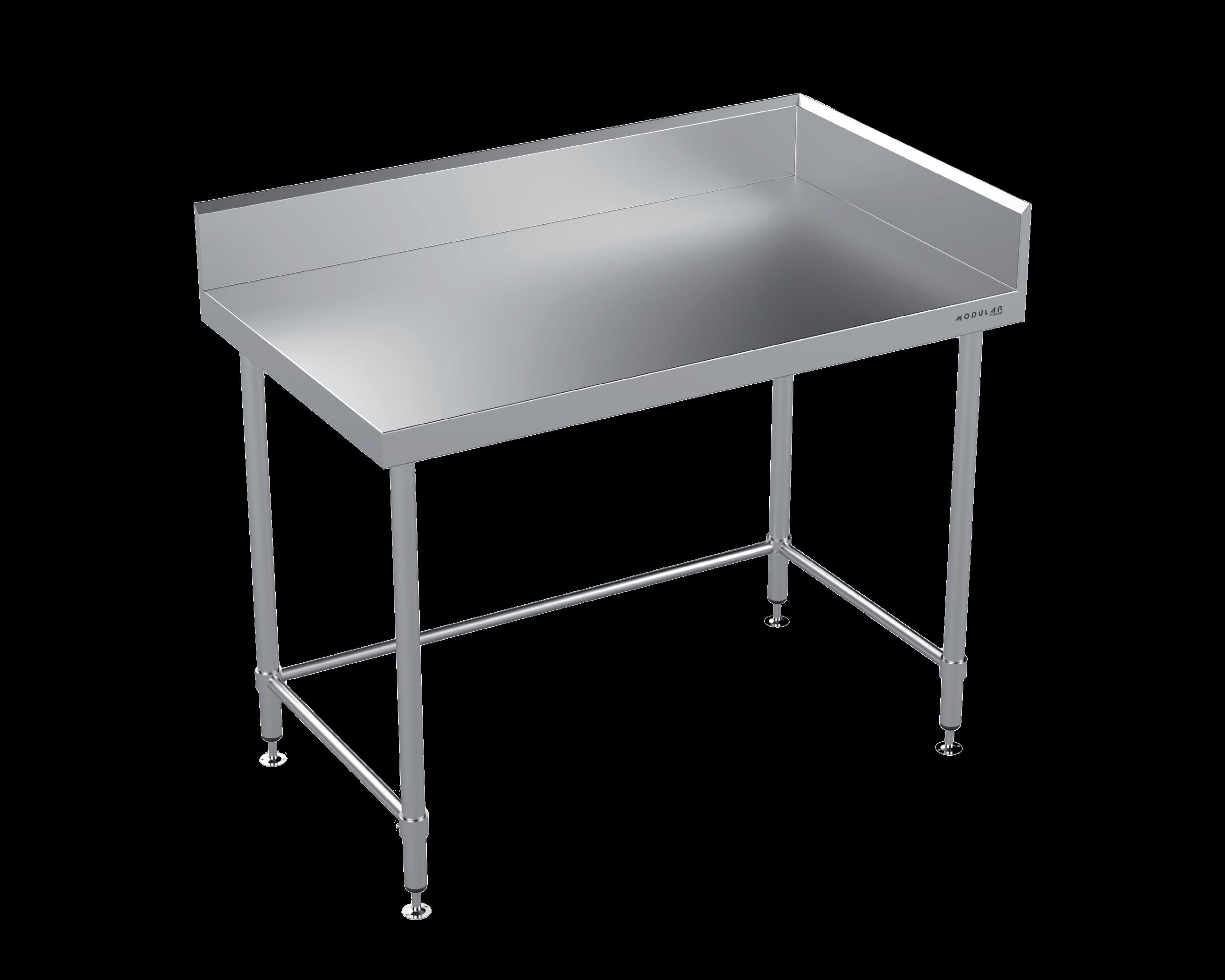




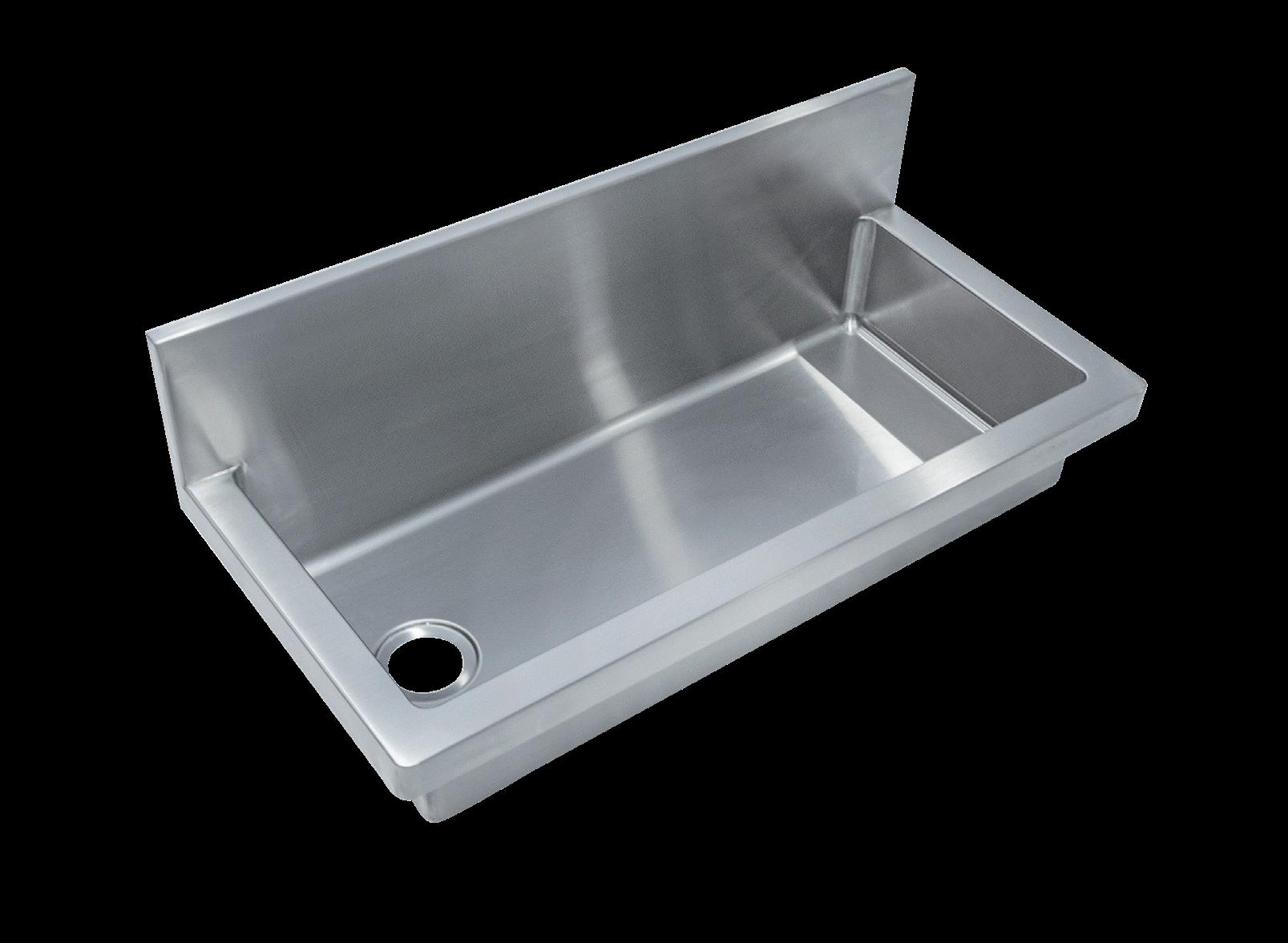
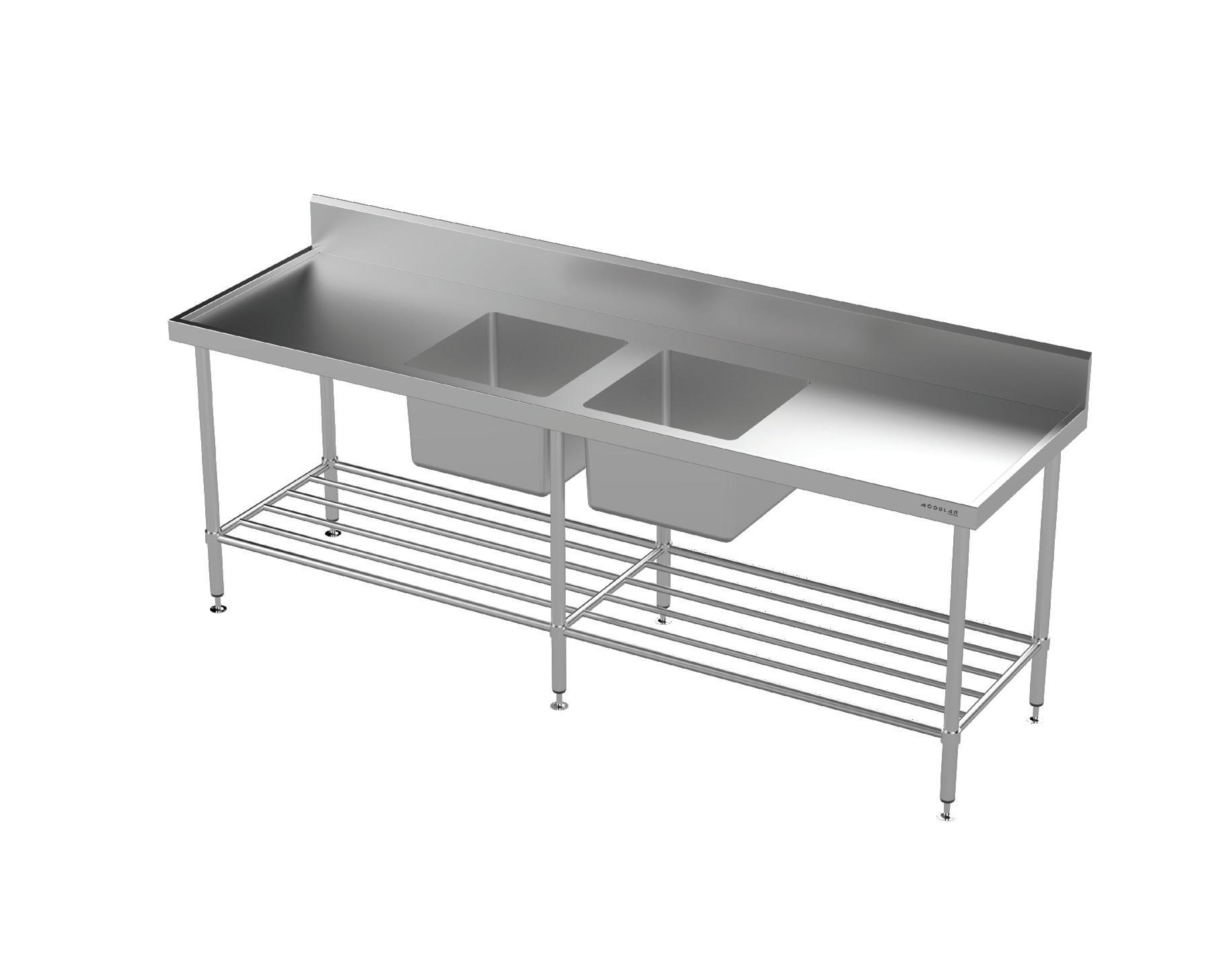
to view the Modular Stainless products online
Scan
The Modular Stainless collection is fully modular and can be customised to suit any individual needs. It includes a comprehensive range of modular benches, sinks, tables, shelves, inlet/outlet benches, glass racks and trolleys.

Modular Stainless is attractive, cost e ective, hygienic, safe and easy to maintain and is ideal for installation in commercial kitchens as well as work areas in the hospitality, hotel and aged care sectors.

HOPELESS BY COLLEEN HOOVER

Colleen Hoover returns with the spellbinding story of two young people with devastating pasts who embark on a passionate, intriguing journey to discover the lessons of life, love, trust – and above all, the healing power that only truth can bring. Sky, a senior in high school, meets Dean Holder, a guy with a promiscuous reputation that rivals her own. From their very first encounter, he terrifies and captivates her.
Something about him sparks memories of her deeply troubled past, a time she’s tried so hard to bury. Though Sky is determined to stay far away from him, his unwavering pursuit and enigmatic smile break down her defences and the intensity of the bond between them grows. But the mysterious Holder has been keeping secrets of his own, and once they are revealed, Sky is changed forever and her ability to trust may be a casualty of the truth. Only by courageously facing the stark revelations can Sky and Holder hope to heal their emotional scars and find a way to live and love without boundaries.
THE NIGHT TRAVELERS BY ARMANDO LUCAS CORREA

Berlin, 1931: Ally Keller, a talented young poet, is alone and scared when she gives birth to a mixed-race daughter she names Lilith. As the Nazis rise to power, Ally knows she must keep her baby in the shadows to protect her against Hitler’s deadly ideology of Aryan purity. But as she grows, it becomes more and more difficult to keep Lilith hidden so Ally sets in motion a dangerous and desperate plan to send her daughter across the ocean to safety.
Havana, 1958: Now an adult, Lilith has few memories of her mother or her childhood in Germany. Besides, she’s too excited for her future with her beloved Martin, a Cuban pilot with strong ties to the Batista government. But as the flames of revolution ignite, Lilith and her newborn daughter, Nadine, find themselves at a terrifying crossroads.
Berlin, 1988: As a scientist in Berlin, Nadine is dedicated to ensuring the dignity of the remains of all those who were murdered by the Nazis. Yet she has spent her entire lifetime avoiding the truth about her own family’s history. It takes her daughter, Luna, to encourage Nadine to uncover the truth about the choices her mother and grandmother made to ensure the survival of their children. And it will fall to Luna to come to terms with a shocking betrayal that changes everything she thought she knew about her family’s past.
Separated by time but united by sacrifice, four women embark on journeys of self-discovery and find themselves to be living testaments to the power of motherly love.
FOR YOU AND ONLY YOU BY CAROLINE KEPNES

Joe Goldberg is ready for a change. Instead of selling books, he’s writing them. And he’s off to a good start. Glenn Shoddy, an acclaimed literary author, recognizes Joe’s genius and invites him to join a tight-knit writing fellowship at Harvard. Finally, Joe will be in a place where talent matters more than pedigree… where intellect is the great equalizer and anything is possible. Even happy endings. Or so he thinks, until he meets his already-published, alreadydistinguished peers, who all seem to be cut from the same elitist cloth.
Thankfully, Wonder Parish enters the picture. They have so much in common. No college degrees, no pretensions, no stories from prep school or grad school. Just a love for literature. If only Wonder could commit herself to the writing life, they could be those rare literary soulmates who never fall prey to their demons. Wonder has a tendency to love, to covet, but Joe is a believer in the rule of fiction: If you want to write a book, you have to kill your darlings.
With her trademark satirical, biting wit, Caroline Kepnes explores why vulnerable people bring out the worst in others as Joe sets out to make this small, exclusive world a fairer place. And if a little crimson runs in the streets of Cambridge… who can blame him? Love doesn’t conquer all. Often, it needs a little push.
30 THE LIBRARY
THE DECK BY FIONA FARRELL

What is the point of inventing stories when reality eclipses imagination?
A little way off in the future, during a time of plague and profound social collapse, a group of friends escapes to a house in the country where they entertain themselves by playing music, eating, drinking and telling stories about their lives. There are tales of thieves and pirates, deaths and a surprise birth, a freak wave and many other stories of misadventure resulting in unexpected felicity.
The Deck borrows the motifs of Giovanni Boccaccio’s 14th-century masterpiece, The Decameron, in which another small group gathered to avoid contagion and passed the time telling stories. But what is the role of fiction, this novel asks, as civilisation falters?
GAMES AND RITUALS BY KATHERINE HEINY

The games and rituals performed by Katherine Heiny’s characters range from mischievous to tender: In “Bridesmaid, Revisited,” Marlee, suffering from a laundry and life crisis, wears a massive bridesmaid’s dress to work. In “Twist and Shout,” Erica’s elderly father mistakes his four-thousand-dollar hearing aid for a cashew and eats it. In “Turn Back, Turn Back,” a bedtime story coupled with a receipt for a Starbucks babyccino reveals a struggling actor’s deception. And in “561,” Charlene pays the true price of infidelity and is forced to help her husband’s ex-wife move out of the family home. (“It’s like you’re North Korea and South Korea…But would North Korea help South Korea move?”) From one of our most celebrated writers, our bard of waking up in the wrong bed, wearing the wrong shoes, late for the wrong job, but loved by the right people, Heiny has delivered a work of glorious humour and immense kindness.
THE GOLDEN DOVES BY MARTHA HALL KELLY

American Josie Anderson and Parisian Arlette LaRue are thrilled to be working in the French resistance, stealing so many Nazi secrets that they become known as the Golden Doves, renowned across France and hunted by the Gestapo. Their courage will cost them everything. When they are finally arrested and taken to the Ravensbrück concentration camp, along with their loved ones, a reclusive Nazi doctor does unspeakable things to Josie’s mother, a celebrated Jewish singer who joined her daughter in Paris when the world seemed bright. And Arlette’s son is stolen from her, never to be seen again.
A decade later the Doves fall headlong into a dangerous dual mission: Josie is working for the U.S. Army Intelligence and accepts an assignment to hunt down the infamous doctor, while a mysterious man tells Arlette he may have found her son. The Golden Doves embark on a quest across Europe and ultimately to French Guiana, discovering a web of terrible secrets, and must put themselves in grave danger to finally secure justice and protect the ones they love.
Martha Hall Kelly has garnered acclaim for her stunning combination of empathy and research into the stories of women throughout history and for exploring the terrors of Ravensbrück. With The Golden Doves, she has crafted an unforgettable story about the fates of Nazi fugitives in the wake of World War II — and the unsung female spies who risked it all to bring them to justice.
31 May/June 2023

Call Caroline on (09) 304 0142 ext 703 or caroline@reviewmags.com





































































